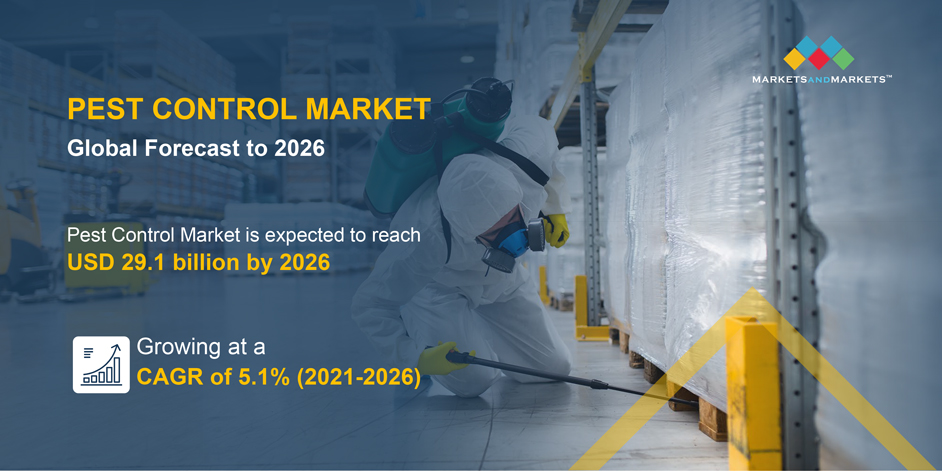Pest Control Market is predicted to progress rapidly at a CAGR of 5.1% to reach USD 29.1 billion by 2026. The global market was estimated to be valued at USD 22.7 billion in 2021.
The pest control market is a constantly evolving industry that is essential to maintaining public health and safety. The market is driven by a number of factors, including population growth, urbanization, and changes in weather patterns. In recent years, the market has seen significant growth, driven by increased demand for pest control services and the introduction of new technologies and techniques.
One of the main drivers of the pest control market is population growth. As the population continues to grow, so does the demand for housing and food. This increased demand leads to more construction and agriculture, which in turn leads to more pests. Urbanization is also a major driver of the pest control market. As cities continue to expand and more people move into urban areas, the risk of pest infestations increases.
Another major driver of the pest control market is changes in weather patterns. Changes in temperature, precipitation, and other weather conditions can create conditions that are conducive to the growth and spread of pests. For example, warmer temperatures can lead to increased insect populations, while wetter conditions can lead to increased mold and mildew.
The pest control market is also driven by advances in technology and techniques. New technologies, such as integrated pest management (IPM) and biological pest control, have become increasingly popular in recent years. IPM is a holistic approach to pest control that uses a combination of cultural, physical, biological, and chemical methods to control pests. Biological pest control involves using natural predators or pathogens to control pests.
The market for pest control services is also driven by the increasing awareness of the health and environmental risks associated with pests. Pests can transmit diseases and cause allergic reactions, and their droppings and other waste can contaminate food and water sources. In addition, many pests can damage buildings and other structures. As a result, more and more people are turning to pest control services to protect their health and property.
In conclusion, the pest control market is a dynamic and constantly evolving industry that is driven by a number of factors, including population growth, urbanization, changes in weather patterns, advances in technology and techniques, and increasing awareness of the health and environmental risks associated with pests. The market is expected to continue to grow in the coming years, driven by the increasing demand for pest control services and the introduction of new technologies and techniques.


